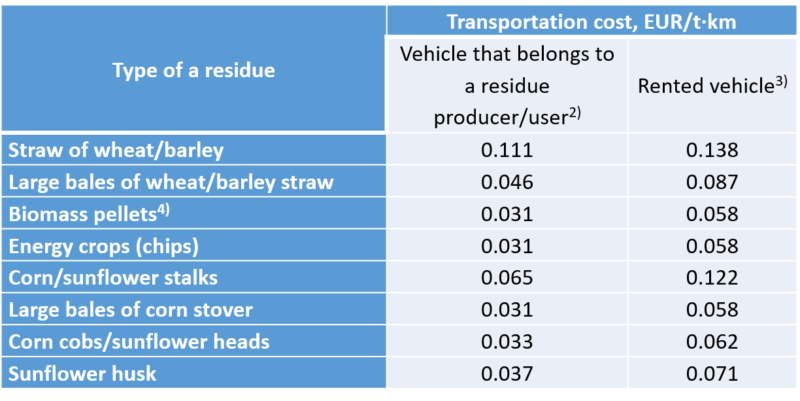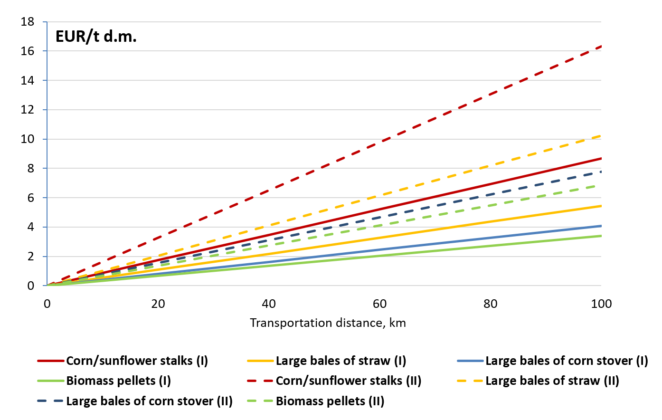For the estimation of the delivery (transportation) cost, it is necessary to assess the functional capacity of a vehicle. For the transportation of agricultural residues over short and middle (in case of bales) distances, a lorry is the most suitable vehicle. The transportation cost of the residues depends on the vehicle capacity, so a lorry with the trailer is preferable to a lorry without it. When considering the lorry without a trailer, its vehicle capacity is twice as low, and therefore the transportation cost (per t×km) is twice as higher. Depending on the type of a residue and its bulk density, the useful load of a lorry with a trailer varies from 5.5 t (27.5% of the vehicle tonnage) for loose straw of wheat/barley to 18.7 t (93.5% of the vehicle tonnage) for maize cobs and sunflower heads.
Assessment of the useful load of a vehicle for agricultural residues

* The considered vehicle is a lorry with a trailer of 110 m3 total volume and 20 t total capacity. ** For comparison.
Agricultural residues can be delivered to a user by a vehicle that belongs to the residue producer (or user) or by a rented vehicle. The transportation cost is different for the cases. The assessment shows that of the two options the use of a rented lorry is usually more expensive (Table below). At that, the lower the useful load of a vehicle is, the higher the difference is. The calculation is made for the case when the vehicle mileage includes distance there and back. When considering the distance only there (in case the lorry is not empty on its way back), the mileage is twice as less and therefore the transportation cost is also twice as low.
Calculation of the agri-residues delivery cost

1) The considered vehicle is a lorry with a trailer of 110 m3 total volume and 20 t total capacity. The vehicle mileage includes distance there and back. 2) Transportation cost includes di 3) Transportation cost is assessed based on current prices of a vehicle rental. 4) Included for comparison.
Delivery costs for the two basic cases of agricultural residues transportation are presented in Figure below. It can be seen that the use of a residue producer/user’s own vehicle is cheaper than the use of a rented lorry with a trailer.

I – transportation by a producer/user’s own vehicle; II – transportation by a rented vehicle
Delivery cost for agribiomass and biofuels
The best figures regarding the useful load of a vehicle, the delivery cost and the rate of increase in the delivered price are associated with the pelletized residues. Biomass pellets can be feasibly and securely transported over long distances. This should be taken into consideration when developing respective logistics and business models.